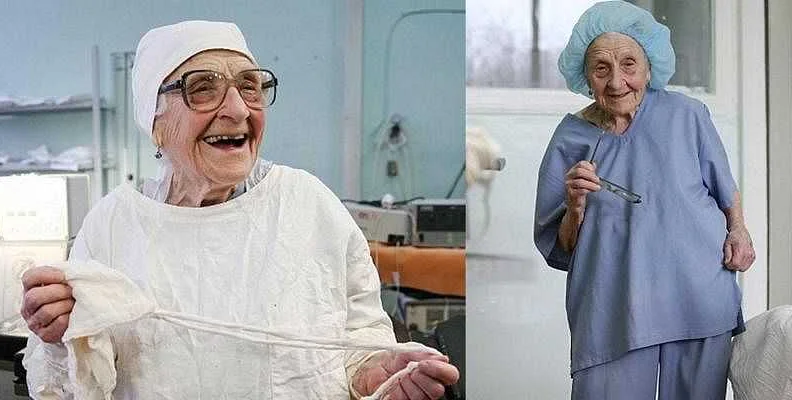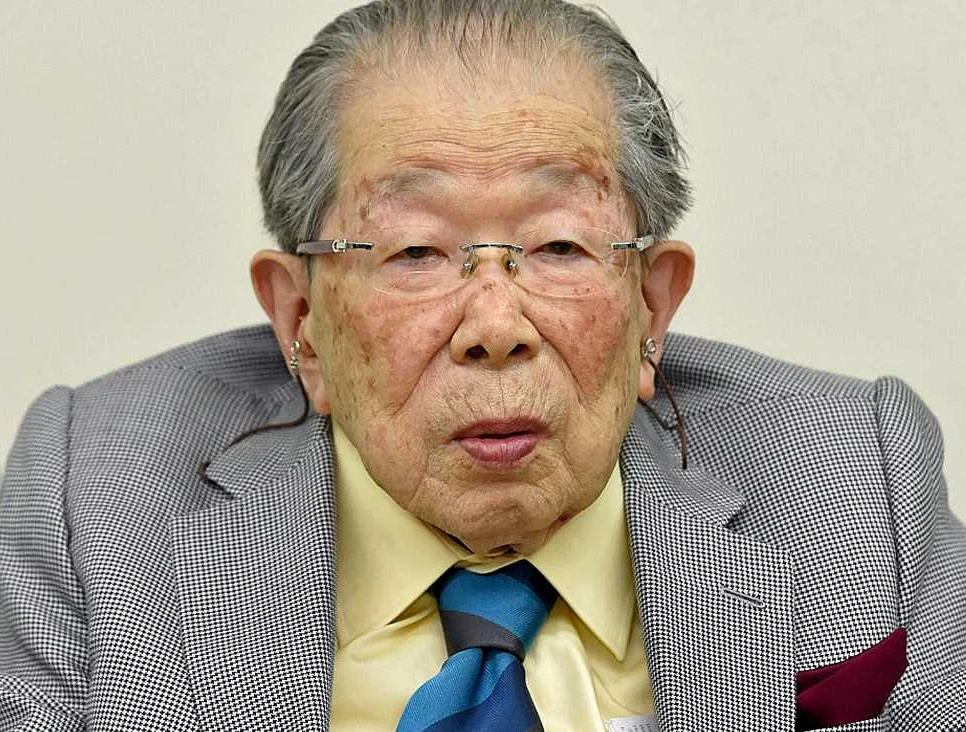Doctor Shishonin named the most terrible problems of old age that shorten life
Содержимое
Doctor Shishonin, a renowned expert in geriatric medicine, reveals the most daunting challenges of aging that drastically reduce life expectancy. Learn about the critical factors that contribute to premature death in the elderly and what can be done to mitigate their impact.
As we age, our bodies undergo various changes and face numerous challenges that can affect our overall health and lifespan. In a recent interview, renowned geriatrician Dr. Shishonin unveiled the top life-shortening issues that are commonly associated with old age.
Cardiovascular diseases: According to Dr. Shishonin, one of the leading causes of mortality in older adults is cardiovascular diseases. The risk of developing conditions such as heart disease, stroke, and high blood pressure increases with age. Dr. Shishonin emphasizes the importance of regular cardiovascular screenings and adopting a heart-healthy lifestyle to reduce the risk of these life-threatening diseases.
Respiratory disorders: Another significant concern for older individuals is respiratory disorders. Conditions like chronic obstructive pulmonary disease (COPD) and pneumonia can greatly impact lung function and lead to decreased quality of life. Dr. Shishonin advises seniors to maintain good respiratory hygiene, avoid exposure to pollutants, and seek medical attention promptly if they experience any respiratory symptoms.
Neurological conditions: Dr. Shishonin also highlights the impact of neurological conditions on longevity. Diseases like Alzheimer’s and Parkinson’s can greatly affect cognitive function and motor skills, thereby reducing life expectancy. The doctor stresses the importance of early detection, proper management, and engaging in brain-stimulating activities to promote brain health in old age.
Musculoskeletal issues: Aging is often accompanied by musculoskeletal problems such as osteoporosis, arthritis, and fractures. These conditions can lead to mobility issues, chronic pain, and a decreased quality of life. Dr. Shishonin advises seniors to maintain a healthy weight, engage in regular exercise, and follow proper bone health practices to prevent or manage these issues.
In conclusion, understanding and addressing the life-shortening issues commonly associated with old age is crucial for promoting healthy aging and increasing lifespan. Dr. Shishonin’s insights shed light on the importance of preventive measures, early detection, and proper management to mitigate the impact of these issues and enhance the overall well-being of older adults.
The Impact of Chronic Diseases
Chronic diseases have a significant impact on the overall health and well-being of older adults. These conditions, which include heart disease, diabetes, cancer, and respiratory diseases, can greatly reduce life expectancy and quality of life.
One of the main reasons chronic diseases have such a detrimental effect on older adults is that they often develop over time and progress slowly. This means that individuals may not realize they have a chronic disease until it has reached an advanced stage, making treatment and management more difficult.
Chronic diseases also tend to be interconnected, meaning that having one chronic condition can increase the risk of developing others. For example, individuals with heart disease are more likely to develop diabetes or respiratory diseases. This can create a cycle of declining health and a higher likelihood of premature death.
Moreover, chronic diseases can greatly impact an individual’s ability to carry out daily activities and maintain independence. The symptoms and complications of these conditions can make it challenging to perform tasks such as bathing, dressing, and walking, leading to a decreased quality of life and increased dependence on others.
It is essential for older adults to be proactive in preventing and managing chronic diseases. This may involve adopting a healthy lifestyle, including regular physical activity, a balanced diet, and avoiding tobacco and excessive alcohol consumption. Regular check-ups with healthcare professionals can also help identify and manage chronic conditions early on.
In conclusion, chronic diseases can have a profound impact on the health and well-being of older adults. Understanding the risks and taking steps to prevent and manage these conditions is crucial for maintaining a high quality of life and increasing life expectancy.
Heart Disease

Heart disease is a major cause of death among the elderly population. As people age, their risk of developing heart disease increases significantly. The most common type of heart disease in older adults is coronary artery disease, which occurs when the blood vessels that supply the heart with oxygen and nutrients become narrowed or blocked. This can lead to chest pain, heart attacks, and other serious complications.
Other forms of heart disease that are prevalent in older adults include heart failure, arrhythmias, and valvular heart disease. Heart failure occurs when the heart is unable to pump enough blood to meet the body’s demands, while arrhythmias are abnormal heart rhythms that can lead to dizziness, fainting, or even sudden cardiac arrest. Valvular heart disease involves damage to the heart’s valves, which can disrupt blood flow and cause symptoms such as chest pain, shortness of breath, and fatigue.
There are several factors that contribute to the development of heart disease in old age. These include high blood pressure, high cholesterol, smoking, obesity, lack of physical activity, and a family history of heart disease. The risk of heart disease can be reduced through lifestyle modifications such as maintaining a healthy diet, exercising regularly, not smoking, and managing stress.
If you’re an older adult, it’s important to be aware of the signs and symptoms of heart disease and seek medical attention if you experience any of them. These may include chest pain or discomfort, shortness of breath, fatigue, dizziness, palpitations, or swelling in the legs, ankles, or feet. Early diagnosis and treatment can help manage the symptoms and prevent further complications.
Cancer

Cancer is one of the leading causes of death in the elderly population. It is a disease characterized by the uncontrolled growth and spread of abnormal cells in the body. There are different types of cancer that can affect various organs and tissues, including lung cancer, breast cancer, prostate cancer, colon cancer, and many others.
Older adults are more susceptible to developing cancer due to a variety of factors. As people age, their cells become more susceptible to genetic mutations that can lead to cancer. Additionally, older adults may have a weakened immune system, making it more difficult for their bodies to detect and combat cancer cells.
Treatment options for cancer in older adults can be more challenging due to factors such as pre-existing health conditions and reduced tolerance to certain treatments. However, advances in medical technology have improved the effectiveness of cancer treatments, and many older adults are able to successfully undergo treatment and achieve remission.
Prevention is an important aspect of managing cancer in older adults. Regular screenings and early detection can significantly improve outcomes. Additionally, adopting a healthy lifestyle, including maintaining a balanced diet, engaging in regular physical activity, and avoiding tobacco and excessive alcohol consumption, can help reduce the risk of developing cancer.
- Regular screenings and early detection are crucial for managing cancer in older adults.
- Older adults should adopt a healthy lifestyle to reduce the risk of developing cancer.
- Treatment options for cancer in older adults can be more challenging due to pre-existing health conditions and reduced tolerance to certain treatments.
- Advances in medical technology have improved the effectiveness of cancer treatments.
Overall, cancer is a significant health concern in older adults. It is important for individuals to be proactive in managing their health, including regular screenings and adopting a healthy lifestyle, to minimize the risk of developing cancer and to ensure early detection and prompt treatment if cancer does occur.
Diabetes
Diabetes is a chronic disease that affects the way the body metabolizes glucose, leading to high blood sugar levels. It is a major health concern among older adults, as it can lead to serious complications and shorten lifespan.
There are two main types of diabetes: type 1 and type 2. Type 1 diabetes is usually diagnosed in childhood or early adulthood and is characterized by the body’s inability to produce insulin. Type 2 diabetes, on the other hand, is more common and is often associated with lifestyle factors such as obesity and lack of physical activity.
Diabetes can have a significant impact on an individual’s overall health and quality of life. It increases the risk of cardiovascular disease, kidney disease, nerve damage, and eye problems. In older adults, diabetes is also associated with an increased risk of cognitive decline and dementia.
Managing diabetes in old age can be challenging, as older adults may have other health conditions and may be taking multiple medications. It is important for older adults with diabetes to work closely with their healthcare team to develop a comprehensive treatment plan that includes medication management, blood sugar monitoring, a healthy diet, regular exercise, and stress management.
| Increased thirst | Cardiovascular disease |
| Frequent urination | Kidney disease |
| Unexplained weight loss | Nerve damage |
| Fatigue | Eye problems |
| Blurred vision | Cognitive decline |
If you or a loved one has diabetes, it is important to prioritize self-care and follow the recommended treatment plan. This may include regular blood sugar monitoring, taking prescribed medications, maintaining a healthy weight, eating a balanced diet, and staying physically active. By managing diabetes effectively, older adults can reduce their risk of complications and improve their overall health and well-being.